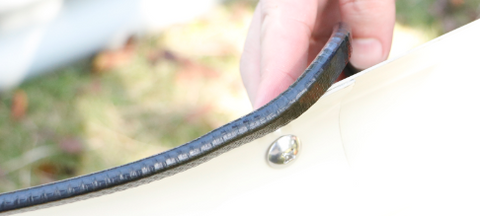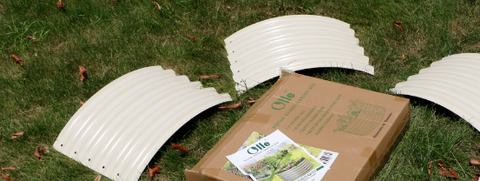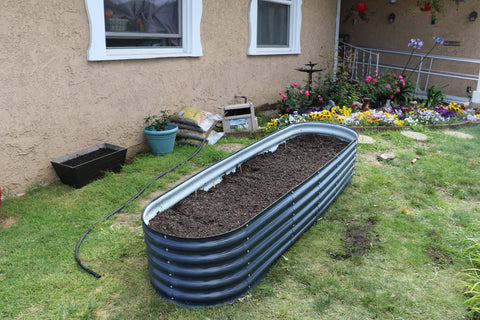Knowledge From Olle Garden Bed: Stevia Planting Guide
Looking for a sugar substitute that can be grown in your garden? You should plant stevia. Stevia rebaudiana is a kind of herb, which is used as a natural and low calorie sweetener. This is great for people with diabetes who need to avoid sugar or who just don't want extra calories. The following content also has some reference value for raised garden beds.
But how do you grow stevia? Before planting, should you know something special? I will answer all these questions here.
What is stevia?
Stevia is a perennial plant, which means it will come back year after year. However, the leaves stopped producing after the second year. This is why many people suggest that you replant every two years. Stevia doesn't have many different varieties, just like some plants. Some nurseries simply sell stevia as stevia. Other places will sell it as candy stevia, stevia and stevia leaves.
Either way, it is the same plant, which is said to be 20-30 times sweeter than ordinary sugar.
How to plant stevia
Stevia is such a simple plant. You can buy online or at your local garden center. You can also start Stevia from the seeds at the end of winter.
Either way, stevia is ready to be planted outdoors after the danger of the last frost has passed.

Where to plant stevia
The first thing you need to do is decide where to plant stevia in your garden. This is a kind of plant that likes sunshine, so you must choose an area where you can get plenty of sunshine. This means that it needs 6-8 hours of sunshine every day, but if possible, it is better to have more sunshine.
If you live in a very hot area in summer, it may be beneficial to plant stevia in a cool place in the afternoon. This is the only exception to the full sunlight requirement.
Stevia doesn't have many different varieties, just like some plants. Some nurseries simply sell stevia as stevia. Other places will sell it as candy stevia, stevia and stevia leaves.
Either way, it is the same plant, which is said to be 20-30 times sweeter than ordinary sugar.
How to plant stevia
Stevia is such a simple plant. You can buy online or at your local garden center. You can also start Stevia from the seeds at the end of winter.
Either way, stevia is ready to be planted outdoors after the danger of the last frost has passed.
Where to plant stevia
The first thing you need to do is decide where to plant stevia in your garden. This is a kind of plant that likes sunshine, so you must choose an area where you can get plenty of sunshine. This means that it needs 6-8 hours of sunshine every day, but if possible, it is better to have more sunshine.
If you live in a very hot area in summer, it may be beneficial to plant stevia in a cool place in the afternoon. This is the only exception to the full sunlight requirement.
Planting stevia: variety, planting guide, care, problems and harvest
Printed by Jennifer Poindexter

Looking for a sugar substitute that can be grown in your garden? You should plant stevia.
Stevia rebaudiana is a kind of herb, which is used as a natural and low calorie sweetener. This is great for people with diabetes who need to avoid sugar or who just don't want extra calories.
But how do you grow stevia? Before planting, should you know something special? I will answer all these questions here.
This video cannot be played because of a technical error. (Error code: 102006)
What is stevia?
Stevia is a perennial plant, which means it will come back year after year. However, the leaves stopped producing after the second year. This is why many people suggest that you replant every two years.
Stevia doesn't have many different varieties, just like some plants. Some nurseries simply sell stevia as stevia. Other places will sell it as candy stevia, stevia and stevia leaves.
Either way, it is the same plant, which is said to be 20-30 times sweeter than ordinary sugar.
How to plant stevia
Stevia is such a simple plant. You can buy online or at your local garden center. You can also start Stevia from the seeds at the end of winter.
Either way, stevia is ready to be planted outdoors after the danger of the last frost has passed.
Where to plant stevia

The first thing you need to do is decide where to plant stevia in your garden. This is a kind of plant that likes sunshine, so you must choose an area where you can get plenty of sunshine. This means that it needs 6-8 hours of sunshine every day, but if possible, it is better to have more sunshine.
If you live in a very hot area in summer, it may be beneficial to plant stevia in a cool place in the afternoon. This is the only exception to the full sunlight requirement.
Suitable soil
Next, you must consider stevia soil. It needs good drainage, with a pH range of 6.2 to 7.2.
Stevia performs well in loose loam. You should add compost to the soil to increase drainage and increase nutrient content before planting. It is better to add compost 2-3 weeks before planting.
When to plant stevia
An important fact about stevia is that it doesn't like frost at all. You must wait until all possible frost has disappeared before planting it outside. Otherwise, you may kill your plants overnight, and no one is willing to do so.
Start inside stevia seeds
Unless you find stevia plants in your local garden nursery, you need to start sowing indoors later in the winter to transplant seedlings outdoors in the spring. Another option is to plant it from the root cuttings if you can use them.
Please note that sprouting stevia seeds can be a bit troublesome, so be sure to keep the seeds under bright light. Plant a large number of seeds to ensure that some are feasible.
Transplant stevia outside
When you are going to plant stevia outside, make sure to keep 18 inches between each plant. Otherwise, you will reduce air circulation and increase the risk of illness.

After hardening the seedlings for a week, put them into the garden.
Dig a pot size hole where stevia seedlings grow. Put the herbs into the hole, cover the soil, and then deep water.
Planting stevia in containers
If you don't have garden space to plant stevia, you can still plant it in containers. You need to be sure to use a 12 inch pot with a good potting mixture.
You can usually plant 1-2 plants per pot, especially if you have larger containers.
Nursing Stevia rebaudiana
Your plants are underground (or in containers), and now you must take care of them until they are harvested. Here's everything about caring for stevia plants.
How often to water stevia plants
You really need to water the plants regularly. Although stevia does not like wet ground or ponding, they also do not like dry soil.
So put your finger in your soil and see if the top inch of soil is dry. If so, it is time to water the plants. If not, please check again the next day.
It should be noted that the leaves of stevia plants can easily wither, especially when the soil is dry. The good news is that once you give it water, the plant will quickly perk up. However, withering does put pressure on plants, so avoid it as much as possible.

Fertilization demand of stevia rebaudiana
Stevia needs to be fed regularly, preferably with water-soluble plant foods. Fertilizing stevia plants can promote better and healthier leaf production.
Cover around stevia
It is always a clever idea to cover the stevia plant. Covering helps prevent the soil from drying out in hot summer days.
Another advantage of mulching is that it helps regulate soil temperature. On hot days, it keeps the soil cool, but on cool days, it keeps the soil warm.
Don't forget that mulch can also inhibit weeds. Nobody likes to deal with weeds.
Trimming is a smart idea
You don't have to cut stevia, but it will grow better. If you do, you will maximize the leaf yield.
Trim the plant several times to encourage branching. The first trim should be when the plant is about 8 inches tall. Then, do it again in early summer.
Don't just throw away those trims! You can root them in potted soil to plant more stevia plants.
Overwintering Stevia rebaudiana

If you live in USDA Cold Zone 8 or higher, stevia is considered to be a winter hardy plant, which grows as a perennial plant with winter cover.
If you do not live in one of these warm areas, you can plant and prepare healthy parent plants, which can be wintered indoors and planted outside in spring.
To do this, select a 1-year-old plant. Switch back to 6 inches high. If they are in the container, move the plants to a warm, sunny place or a heated greenhouse.
In spring, new growth begins to appear. You can cut off new stems and put them into the seeds to start mixing.
Common problems and solutions in planting stevia
When people grow stevia, they usually encounter one of two problems. These are what they see:
Stevia died of frost
If you live in a colder climate, don't be surprised if your stevia is cooled to the bone and completely dies. This happens sometimes.
This is why we recommend that plants be brought into the winter or covered with frost until they are dormant.
Then I hope to come back next year. If not, plant stevia as an annual. You can start with seeds every year to help control costs.
Stevia died of damp soil
It is important to plant stevia in places where the soil is well drained. The reason is that too much water will rot the roots of plants.
If this happens, your plant will die. It is important to prevent this by using good quality soil that is loose and well drained.
Diseases and insect pests

Stevia won't have too many diseases or pests, but you should remember some.
Alternifolia leaf spot
The disease causes red, round, small spots with white or gray centers on the leaves and midrib. Sometimes, the lesion will surround the stem, causing the plant to wither. In warm or wet weather, things get worse.
Make sure you don't get water on the leaves, and always remove the affected plant parts. Separate plants for air circulation.
ash
This is a nasty fungus that causes gray mold to form in stems, leaves, flowers and all parts of the plan. It likes cool and humid weather conditions.
If you notice that this fungus is developing, please remove all affected parts of the plant and do not water at night.
Damping off
This is one of the most common problems when starting plants from seeds. At first, the seedlings looked healthy, but then they suddenly withered. Damping abscission is a kind of fungus, which usually occurs when the soil becomes wet or there is too much nitrogen in the soil.
It is important to keep seedlings moist but avoid over watering. Do not over fertilize the seedlings, and thin the seedlings quickly to avoid overcrowding. In addition, clean the container before reuse, and add a little bleach to the container to kill the remaining fungus.
aphid
Aphids are tiny insects that can be red, black, green, yellow, brown, gray or peaches. They suck on leaves, usually attached to the underside of the leaves. They then leave a sticky residue that attracts ants.
You can knock the aphids off the leaves with the water in the hose. Another option is to use insecticide soap on the leaves.
slug
You probably know what slugs look like! They leave large holes in the leaves or eat the whole leaf. You will find slime trails in the morning; The slug is more active and eats at night.
In the evening, go into your garden and try to pick them up from your plants. Try to attract them to traps made of cornmeal or beer.
Best and worst companion plants
Each plant has other plants. When planted with them, they do better, and some do not do well.
The best plants for stevia are marjoram and thyme. They form mounds during production, which is why stevia works well.
How to harvest and store stevia
The best time to harvest stevia is in autumn, because the leaves are the sweetest in colder temperatures. Leaves taste better before they bloom.
Between September and October, when the buds appear but are not yet fully open, it is time to harvest the whole plant. The best time to harvest is in the morning, because the sugar content of plants is very high
It's important that you don't let those flowers open. Once more than 3-4 flowers bloom, the whole flavor of the leaves will change, and they will soon lose their sweet taste.
Your plant will continue to grow throughout the summer and fall, so please continue to cut and use it. You can also dry it. Cut the whole stem, wash it, and hang it to dry.

Another option is to put them on the nonmetallic screen outside so that they can dry in sunny days. Usually, they are dried in one day. If you have a food dehydrator, you can also use one of them.
Once dry and crisp, you can crush the leaves by hand or use a food processor to grind them into powder. Homegrown stevia should be stored in sealed containers.
How to use stevia Once you grow stevia, you must know how to turn it into a usable product. Yes, you can put the ground leaves into your drink, just like adding sugar.
But don't you want to know some other ways to turn these stevia leaves into something useful?
They are:
Stevia simple syrup
When I can have fruit, recipes usually require simple syrup. I'm also a person who tries to avoid a lot of sugar because of the extra calories.
In this case, simple stevia syrup may come in handy. It helps to simplify the process. You simply boil stevia leaves in water until they thicken.
Then you use syrup. Overall, it takes about five minutes and reduces a lot of calories.
Sugar free stevia ice cream
Do you like ice cream, but don't you like the pounds it packs? Maybe you have diabetes, you must pay attention to your sugar intake?
Well, either way, this recipe is a delicious and simple recipe for making ice cream. It uses stevia instead of sugar.
Simple and cheap stevia extract
Do you prefer to use stevia extract instead of powder? If you are not sure how to do this, you need to follow this tutorial.
This is a cheap option for making your own stevia extract, using ingredients that are easy to find.
